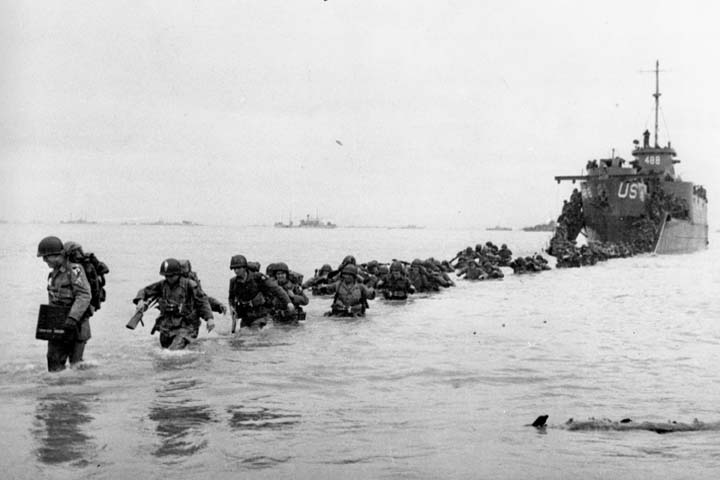Advertisement
The 70th Anniversary Of World War II’s ‘D-Day’
Seventy years ago, 160,000 allied troops landed on the beaches of Normandy for D-Day. Now they’re turning 90. We remember.

Tomorrow marks 70 years since D-Day and World War II’s all-out invasion of a mainland Europe controlled by the armies of Adolf Hitler. June 6, 1944 was an epic, go-for-broke day with Allied forces storming the beaches of Normandy under withering German fire. Now those American “boys” who went ashore at Omaha beach, Utah beach, who parachuted behind the lines, are pushing 90. Many are already gone. There is a kind of last salute that comes with this anniversary. This hour On Point: remembering a battle like no other, D-Day, 70 years on.
-- Tom Ashbrook
Guests
Carlo D'Este, American military historian and author. Author of "Decision in Normandy," "Eisenhower: A Soldier's Life," "Patton: Genius for War," "Warlord: A Life of Winston Churchill at War, 1874 - 1945" and "World War II In The Mediterranean 1942 - 1945."
Owen Glendening, associate vice president of education and access at the National WWII Museum.
Major Henry "Duke" Boswell, former communications sergeant in the Army's 82nd Airborne Division in the Allied Offensive on "D-Day" in 1944. (@fourjumps)
Dawn Doucette, caregiver for Major Henry "Duke" Boswell.
From Tom's Reading List
Washington Post: D-Day at 70: Historic photos from the invasion of Normandy — "While most in the U.S. know of the bloody scenes that immediately follow the beaching of amphibious craft on the shores of Normandy, the brunt of the fighting took place far from the coast. Some 20,000 French civilians would perish in the crossfire, most killed by Allied bombing. Allied and German forces engaged in pitched, chaotic skirmishes throughout the picturesque Norman countryside, marked by hedgerows and old stone-and-steeple towns."
USA Today: D-Day: The most important weather forecast in history — "It was 70 years ago this week that Gen. Eisenhower's chief meteorologist, Group Capt. James Martin Stagg, made one of the most important weather forecasts of all time. Defying his colleagues, he advised Ike to postpone the invasion of Normandy by one day from June 5, 1944, to June 6, because of uncertain weather conditions."
Boston Globe: How the French saw D-day — "Until recently, Americans have largely ignored the experience of the liberated, the French civilians—in particular the Normans—during those first days and weeks. After four years under the Nazi occupation, the men, women, and children of Normandy welcomed their liberators. But their gratitude was often mingled with confusion and bitterness: On D-day, American firepower took 3,000 French civilian lives, as many as the Americans lost to German firepower at Omaha Beach. By the time Normandy was fully liberated, more than 20,000 civilians had died, most of them victims of the Allied bombings that pummeled the region’s cities and towns."
This program aired on June 5, 2014.